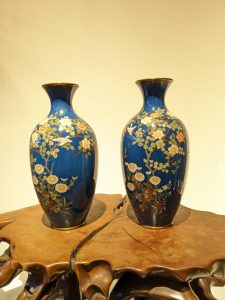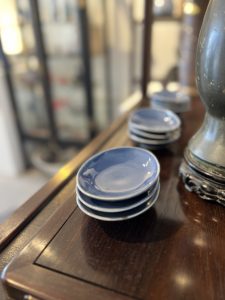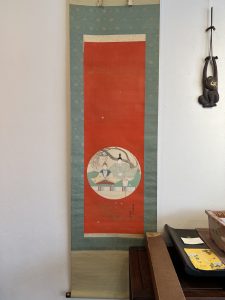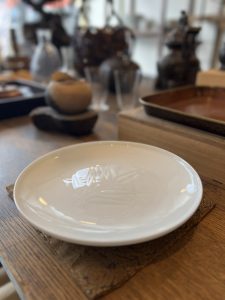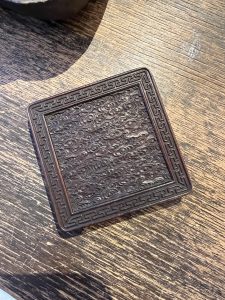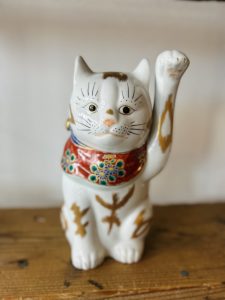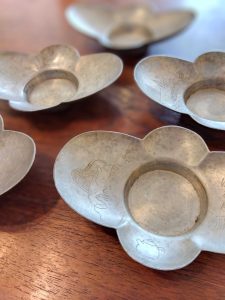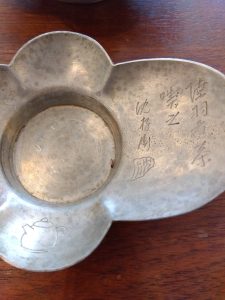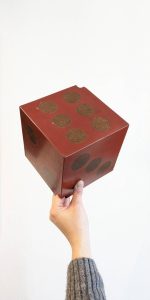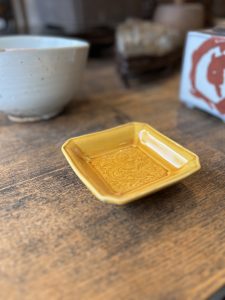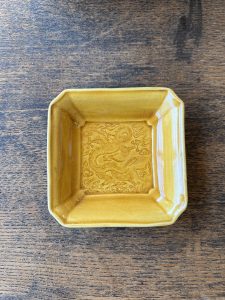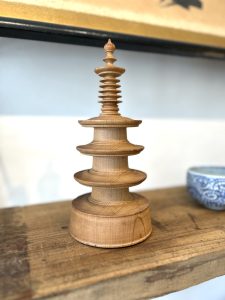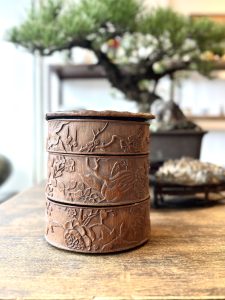現在、ここ名古屋では今年25回目を迎えるショコラの祭典、アムール・デュ・ショコラが名古屋タカシマヤにて開催されております。
チョコレートへの愛は十二分にあるのですが、人混みに突入する勇気がなく、実は行ったことがありません。毎年参戦しようかどうか迷っているうちに閉幕してしまいます。テレビなどで限定品のチョコレートなどが紹介されると、脳内で味をイメージし地味に楽しんでおります。きっと私の想像など軽く超える美味しさなのでしょうね。

2001年に始まったこちらの祭典、初回から催し会場で大々的に打ち出されたのかと思いきや、実際のところは「地下の食品会場で開催したかったが、デパートが前年開業したばかりで場所が確保できず、やむなく催し会場を使用した」とのこと。規模も現在の100分の1ほどだったそうです。
今ではこの催事場で行うバレンタインイベントが全国に広がり、業界の定番となっています。
世界中のスターパティシエが店頭に立つこともあり、新商品、限定商品も豊富に取り揃えられ、昨年はなんと41億円以上を売り上げたのだとか。
当初は仕方なく催事場にに移動したイベントだったようですが、何が功を奏するか分からないものですね。
疲れた時や、リラックスしたい時についつい手が伸びてしまうチョコレートですが、個人的にはチョコにはコーヒーが欠かせないと思っております。
あるチョコレート生産者の方の話によりますと、コーヒーはチョコレートと合わせることで、コーヒーの中にある香りが開いて感じやすくなり、またチョコレートだけでは味がすぐに消えてしまうが、コーヒーと合わせることでシナモンのような味の余韻が長く続くのだそうです。
私はそのように表現できるほどの感覚は持ち合わせておりませんが、一緒に口に含むと何だか美味しい!という味覚だけはあるようです。
皆さまご存知の通り、コーヒーとチョコレートはどちらも果実の種を発酵、焙煎したものから作られますが、全く違う植物から採取されます。(コーヒー豆の木はアカネ科、カカオ豆の木はアオイ科だそうです)。漠然とは理解していましたが、それぞれの果実の映像を見てみると想像以上に形が違うことに驚きます。
コーヒーの実は「コーヒーチェリー」と呼ばれ、直径1.5cmほどの赤く熟した実の中に2粒の種子が入っており、これがコーヒー豆となります。
一方チョコレートは「カカオポッド」と呼ばれる小ぶりのラグビーボールのような楕円形の実から採取され、カカオバルプという白い果肉に包まれたカカオ豆が約50粒ほど入っています。枝や幹からびっしりとぶら下がる大きな楕円形の果実は、初めて見る人には異様な光景に見えるのだとか。
コーヒー豆の原産地は主にアフリカや中東、東南アジアや南アメリカなどで、栽培には土、雨、日当たり、温度などの条件が満たされる標高の高い地域で栽培されます。この栽培される地域が赤道付近に集中することから「コーヒーベルト」とも呼ばれています。
カカオ豆の生産地もこのコーヒーベルトとほぼ重なるようですが、少しだけ範囲が狭く、北緯と南緯が20度以内の地帯で、年間平均気温が27℃以上の高温多湿の地域です。高地では育たず300メートルほどの低地で栽培されます。
親戚のように似ていると勝手に思っていたコーヒー豆とカカオ豆ですが、かなり違う環境で育っているのですね。
標高が高ければ高いほど高品質になるともいわれるコーヒー豆は、いま地球温暖化の影響をまともに受けているそうです。高地の気温がどんどん上がっており、コーヒー豆の品質が少しずつ落ちてきているとか。
実際アラビカというコーヒー豆は2050年ころまでには収穫できなくなるのではと危惧されているようです。
私は大のコーヒー好きなので、飲むことで日々エネルギーをもらっているのですが、もし飲めなくなる日がきたら…。
世界中からも悲鳴が聞こえてきそうです。
それでは、また次の機会に(スタッフH)
Currently, Amour du Chocolat, a festival of chocolates, is being held here in Nagoya for the 25th time this year at Nagoya Takashimaya.
Although I have more than enough love for chocolate, I have never actually been to the event because I do not have the courage to rush into the crowds. Every year, the event closes before I can decide whether or not to participate. When limited edition chocolates are introduced on TV, I imagine the taste in my brain and enjoy it in a humble way. I am sure that the taste is beyond my imagination.
I thought that this festival started in 2001 and was first held in a large scale at an event hall, but in fact, “We wanted to hold the festival in a food hall in the basement, but the department store had just opened the previous year and we could not secure a space, so we had no choice but to use the event hall. The scale of the event was about 1/100th of the current one.
Today, Valentine’s Day events held at this venue have spread nationwide and have become a staple of the industry.
Star chefs from all over the world stand in front of the store, and there is a wide selection of new and limited-edition products, and last year the event sold over 4.1 billion yen.
In the beginning, the event was moved to the event hall out of necessity, but you never know what will work.
Chocolate is something we reach for when we are tired or want to relax, but I personally believe that coffee is essential with chocolate.
According to one chocolate producer, when coffee is combined with chocolate, the aroma in the coffee opens up and becomes easier to perceive, and while the taste of chocolate alone disappears quickly, when combined with coffee, the lingering cinnamon-like flavor lingers for a long time.
I don’t have the sense to describe it that way, but I do have the sense of taste that it tastes good when I put it in my mouth together! I don’t have the sense to describe it that way, but I do have the sense of taste that when you put them together in your mouth, they taste good!
As we all know, coffee and chocolate are both made from fermented and roasted fruit seeds, but they come from completely different plants. (The coffee bean tree is in the Acanthaceae family, while the cacao bean tree is in the mallow family.) I had a vague understanding of this, but when I looked at the images of each fruit, I was surprised to see that the shapes are more different than I had imagined.
Coffee berries are called “coffee cherries,” and each red ripe berry, about 1.5 cm in diameter, contains two seeds, which are the coffee bean.
Chocolate, on the other hand, comes from a small, rugby-ball-like, oval-shaped fruit called a “cacao pod,” which contains about 50 cacao beans encased in a white pulp called a cacao bulp. The large oval fruits hanging from the branches and trunks look like an odd sight to those who see them for the first time.
Coffee beans originate mainly from Africa, the Middle East, Southeast Asia, and South America, and are grown in high-altitude areas where soil, rain, sunlight, and temperature conditions are suitable for cultivation. The area where coffee beans are grown is concentrated near the equator and is therefore also known as the “coffee belt.
Cacao bean production areas also seem to overlap with this coffee belt, but in a slightly narrower range, within 20 degrees north and south latitude, and in hot and humid areas with an average annual temperature of 27°C or higher. It does not grow at high altitudes, but is cultivated in lowlands as low as 300 meters.
Coffee beans and cacao beans, which I had thought of as similar to each other, are grown in quite different environments.
Coffee, which is said to be of higher quality the higher the elevation, is now being seriously affected by global warming. The temperature in the highlands is rising rapidly, and the quality of coffee beans is gradually declining.
In fact, it is feared that the Arabica coffee bean will no longer be harvested by around 2050.
I am a coffee lover, and drinking coffee gives me energy on a daily basis, but if the day comes when I can no longer drink it….
I can hear the screams from all over the world.
See you next time (Staff H)
*****************
ご実家の整理やお片付けなどをされている方のご相談などが多くございます。
お片付けなどくれぐれもご無理のないようになさってくださいませ。
風光舎では古美術品や骨董品の他にも絵画や宝石、趣味のお品など様々なジャンルのものを買受しております。
お片付けをされていて、こういうものでもいいのかしらと迷われているものでも、どうぞお気軽にご相談下さいませ。
また風光舎は、出張買取も強化しております。ご近所はもちろん、愛知県内、岐阜県、三重県その他の県へも出張いたします。
まずは、お電話お待ちしております。
愛知県名古屋市千種区姫池通
骨董 買取【古美術 風光舎 名古屋店】
TEL052(734)8444
10:00-18:00 OPEN
#出張買取#骨董#古美術#骨董品#絵画#版画#茶道具#刀剣#彫刻
